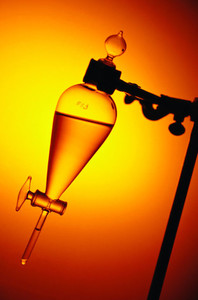Period: January to August 2012
Regulatory issues are a challenge facing generics of all kinds, and one that may limit the competitiveness and sustainability of the generics industry. However, with the cost of medicines becoming a more and more important factor for patients and the healthcare industry as a whole there is a need for both harmonization of regulatory requirements between different regions, e.g. Canada, EU and US, as well as a need for clarity in the regulatory requirements for certain generics.
Over the last years, a number of national and international regulatory agencies have issued a variety of final and draft guidelines relating to the pharmaceutical and clinical development of inhaled drug products. Some of these requirements are similar across guidelines and regions while some are less harmonized.
This article discusses some of the research papers covering the area of regulatory issues for generics that have been published during the period of January to August 2012.
The hot topic investigated by researchers during this period was regulatory requirements for inhaled asthma and chronic obstructive pulmonary disease (COPD) generics.
EU regulatory requirements
In a study carried out by Mr Fuglsang, the author carried out a review of the current regulatory requirements associated with development and submission of abridged dossiers for locally acting inhalation drugs intended for the treatment of asthma and COPD [1].
The current EU law does not provide for submission of inhalation drugs for asthma and COPD as generics due to the definition of bioequivalence and bioavailability. Instead such products must be submitted via hybrid applications. Hybrid applications differ from generics applications in that the results of appropriate preclinical tests and clinical trials will be necessary for the following three circumstances:
- The strict definition of a ‘generic medicinal product’ is not met
- Bioavailability studies cannot be used to demonstrate bioequivalence
- There are changes in the active substance(s), therapeutic indications, strength, pharmaceutical form or route of administration of the generic product compared to the reference medicinal product.
These applications are termed ‘hybrid’, as they rely in part on the results of preclinical tests and clinical trials for a reference product and in part on new data.
A guideline from 2009 is available that suggests a stepwise approach toward approval. An applicant should first consider the degree of in vitro match with the reference product; provided that the match is extensive, approval may be granted. If the in vitro match cannot be proven, the next step is comparison of lung deposition and systemic exposure. If this match is proven, approval may be granted; otherwise, the final step is pharmacodynamic evaluation.
US regulatory requirements
In the US, on the other hand, submission of locally acting inhalation drugs intended for the treatment of asthma and COPD as generics is possible [1]. However, only a single specific guidance document from 1989 is in force. It describes in vitro requirements for comparison of albuterol and metaproterenol pressurized metered dose inhalers. Therefore applicants are encouraged to seek dialogue with regulators prior to and during development.
Canadian regulatory requirements
In a study by Dr Mayers, the author reviewed the recommendations and rationale behind Health Canada’s guidance for in vivo testing of generic or ‘subsequent market entry’ inhaled corticosteroids for the treatment of asthma and COPD [2].
As a result of its meetings between 2007 and 2009, the Scientific Advisory Committee on Respiratory and Allergy Therapies (SAC-RAT) concluded that measuring airway eosinophils in mild, stable, steroid-naive, subjects was reproducible and measurable. SAC-RAT recommended that study duration could be reduced to three weeks using this inflammatory outcome to establish therapeutic equivalence between inhaled corticosteroid generics and the Canadian reference product. A placebo limb of the trial was added to establish biological activity of the products.
The committee recommended that long-acting beta agonist generics to be tested in a clinically stable, representative population with GOLD (Global Initiative for Chronic Obstructive Lung Disease) stage 2 and/or 3 COPD.
SAC-RAT could not, however, reach agreement regarding the extent of allowed forced expiratory volume in one second (FEV1) reversibility in this population. The FEV1 area under the curve was recommended as a primary end point. For equivalence, both AUC and the shape of the curve–assessed by the peak and trough–over a 12-hour period should be different from placebo but similar for the generic and reference products. Secondary end points were not recommended.
Dr Mayers concluded that ‘when designing trials to assess therapeutic equivalence, the anticipated mechanism of action of the drug should be used to determine outcome measures.’
The research highlights the importance of the need for clarity and harmonization between different regions in the regulatory requirements surrounding inhalation drugs for asthma and COPD.
Related articles
Overview of research on ‘general’ policies aimed at generics in 2012
Overview of clinical research on generics in 2012
References
1. Fuglsang A. The US and EU regulatory landscapes for locally acting generic/hybrid inhalation products intended for treatment of asthma and COPD. J Aerosol Med Pulm Drug Deliv. 2012;25(4):243-7.
2. Mayers I. Introduction to the Canadian Scientific Advisory Committee on Respiratory and Allergy Therapies: in vivo evaluation for clinical testing in COPD and asthma therapy using generics. J Aerosol Med Pulm Drug Deliv. 2012;25(4):204-8.
Permission granted to reproduce for personal and educational use only. All other reproduction, copy or reprinting of all or part of any ‘Content’ found on this website is strictly prohibited without the prior consent of the publisher. Contact the publisher to obtain permission before redistributing.








 0
0











Post your comment